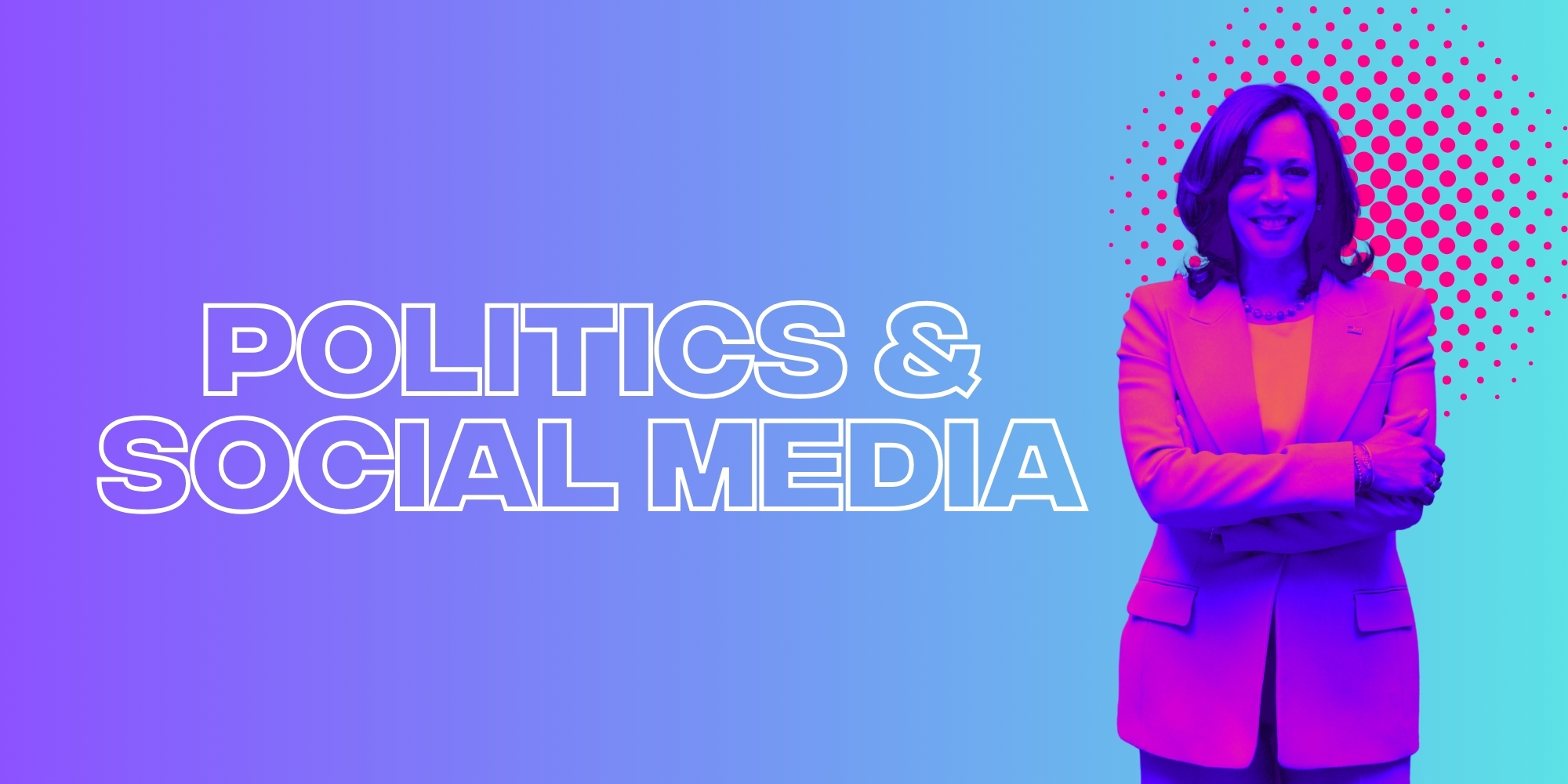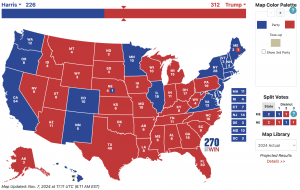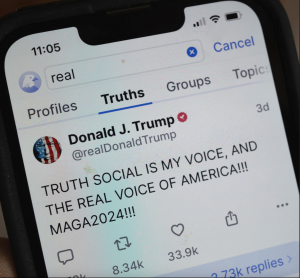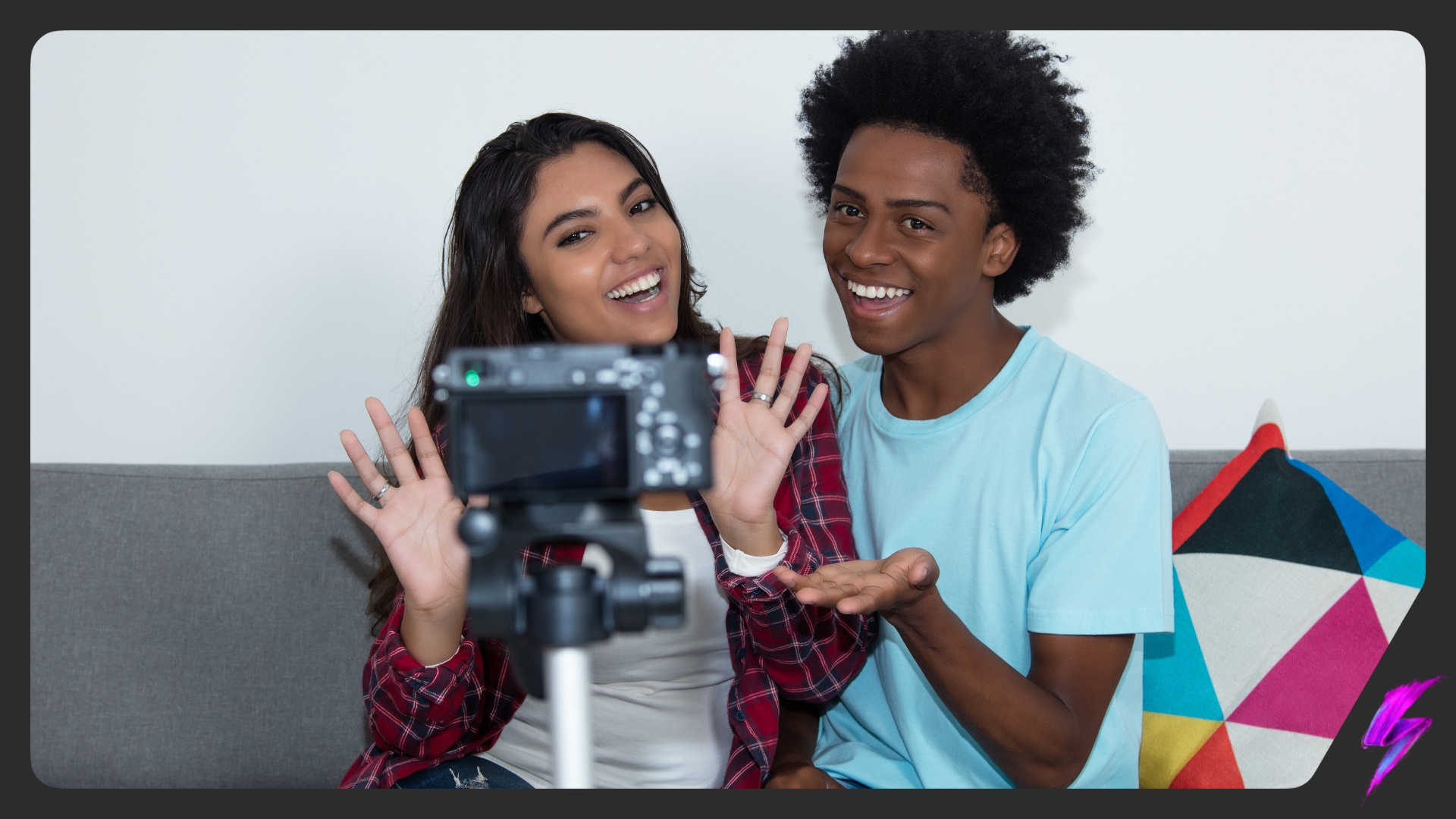Is The Democrat’s Political Social Media Strategy Losing Them Followers?
Nov 29, 2024
Article

We are now almost a month past the 2024 US election and this one was a very hard pill to swallow for Democrats. There was so much hope that the new year would host the first ever female President of the United States given the Democrat’s out-of-the-box political social media strategy. Now that some 74 million Americans have had time to grieve, people can now take a step back and analyze what went wrong.
Was it all just false hope? Did the Democrats miss something?
The answers are yes and yes.
So what happened?

SOCIAL MEDIA AND THE US ELECTION
For those of you who may have missed our blog about the Democratic political social media strategy in this election you can check out that post here.
What made this election unique was that so much of it took place over social media platforms like TikTok, X, and Truth Social rather than traditional spaces like TV commercial breaks during primetime television.
The Democratic political social media strategy prominently featured KamalaHQ, a TikTok account that gained significant traction with its meme-centric content and Gen Z-friendly language. In contrast, the Republican approach closely mirrored the 2016 election strategy, with President Elect Donald Trump utilizing his own platform, Truth Social, to share unfiltered, stream-of-consciousness posts that many followers continue to find both relatable and endearing.
@kamalahq From all of us at Kamala HQ, thank you for following along.
Something important to note is that Trump is not nearly as active on mainstream social media platforms as he is on Truth Social, yet he holds both the popular vote and the electoral college.

So where does the true influence lie?
Right-Wing Media Outlets
In order to truly understand this we have to dive deeper into the history of right-wing political influence on social media.
After the January 6th, 2021 attack on the Capital, X, formally known as Twitter, banned Trump from the platform and all his far-right supporters who seemed to be boosting his agenda. In retaliation Trump and his supporters started their own platforms, like Truth Social, where they were able to promote their own conservative beliefs without interference. This puts Democrats at a major disadvantage, as more mainstream platforms like Instagram, Threads, and Facebook are not “liberal public spaces” and no such Democratic-led tech platform currently exists.
VOTER DEMOGRAPHICS
Another critical aspect of creating a successful political social media strategy involves understanding voter demographics. Perhaps unsurprisingly, Trump’s core support came from white men, with 52% of voters aged 18 to 44. When considering the media consumed by this demographic, stereotypically “masculine” interests such as sports, gaming, MMA, and other competitive or action-oriented content are prominent.
@staytunednbc Although the youth vote has trended #Democratic for generations, now there seems to be a shift to the right for young men increasingly supporting DonaldTrump. NBC News’ Shaquille Brewster went tailgating before an #Atlanta #Falcons game to talk with young male voters in this key battleground state.
Targeting such content aligns with this demographic’s preferences, allowing political messaging to blend into their media consumption habits seamlessly. Campaigns leveraging these spaces have the potential to reach voters in a relatable and non-intrusive manner.
HUMAN CONNECTION
Nowadays voters are looking for candidates they feel are real human beings and who strive to make real human connections, not just politicians who say what is needed to win the Oval Office. Today, much of that human connection is made online. This political social media strategy includes long-form, sit-down interviews in spaces that are not explicitly political.
@callherdaddy All parties welcome on CHD. Watch now
This is not to say that the Harris campaign did not engage with the ecosystem. Harris herself made an appearance on the “Call Her Daddy” podcast, a culturally-relevant show whose audience demographic leans heavily towards women under 35. However, Trump and his team simply engaged more influencers and appeared on more podcasts, most notably Joe Rogan and Bar Stool Sports’ “Bussin’ With the Boys”, both non-political venues that have a far and deep reach within the young male demographic.
@robertfkennedyjrofficial Joe Rogan’s interview with President Trump was a tour de force. His breadth and granular working knowledge on a range of random topics will surprise much of the nation. He spoke with specifics, conviction, and passion about California irrigation, nuclear power, North Korea, ISIS, boxing, the UFC, and the Lincoln Bedroom. He was calm and moved easily from each subject Joe raised, demonstrating his authenticity with honest thought, experience, and thoughtfulness Kamala Harris could never muster. I can’t wait to get to D.C. and work with President Trump to Make America Health Again. MAHA 🇺🇸
♬ original sound – Robert F. Kennedy Jr – Robert F. Kennedy Jr
The influence of Influencer
Going beyond the intentions of a successful political social media strategy, it is also important to analyze how the influencers we regularly see on our TikTok for-you-page can also have an unintentional political bias. Take traditional housewives “tradwives” or heath and fitness influencers as a prime example.
Tradwife influencers promote a lifestyle centered on homemaking, traditional gender roles, and often faith-based family structures, while health and fitness influencers may advocate for discipline, self-improvement, and individualism, both of which resonate with right-leaning values.
@tradwifetori No. 1 trad wife rule💗 #foryoupage #explore
This alignment can also be observed in the narratives they use, which sometimes overlap with broader conservative cultural movements. For example, discussions around “protecting family values” or opposing modern, feminist ideologies are common in these spaces. Additionally, these communities often express skepticism toward government intervention or liberal social policies, further reinforcing their association with right-wing audiences.
These ideological trends highlight how niche online subcultures can influence political leanings and voter behavior through lifestyle content.
A POLITICAL SOCIAL MEDIA STRATEGY SHOULD REPRESENT REAL LIFE
While it might feel like online influence completely overshadowed in-person efforts during the 2024 election, the reality is more complicated as the global economy played a huge factor. This is also not to say that ground campaigning did not matter. In swing states where Harris hit the ground hard, Democrats saw less of a shift to the right compared to the rest of the country.
@msnbc Vice President Kamala Harris knocked on the doors of a couple of families in Reading, Pennsylvania telling the voters she hopes to earn their vote. #kamalaharris #kamala #harris
Looking ahead, the Democratic Party needs to step up its political social media strategy. It’s not just about having a presence online—it’s about making their messaging feel human and relatable. They need to meet voters where they are, both digitally and in real life, to really connect. How they adapt over the next four years could shape the future of campaigning.
Written by: Maya Mehlman
Our influencer marketing agency and social agency are located worldwide, with our agency network based in the USA, UK, UAE and China.
If you want to find industry insights, visit our influencer marketing and social media blogs.
@sociallypowerful
Social And Influencer Marketing News + Insights
Get in touch
We'll show you how to start powerful conversation, drive social engagement, build your brand, hit sales targets or meet other goals you have, wherever you are in the world.
Work with us





